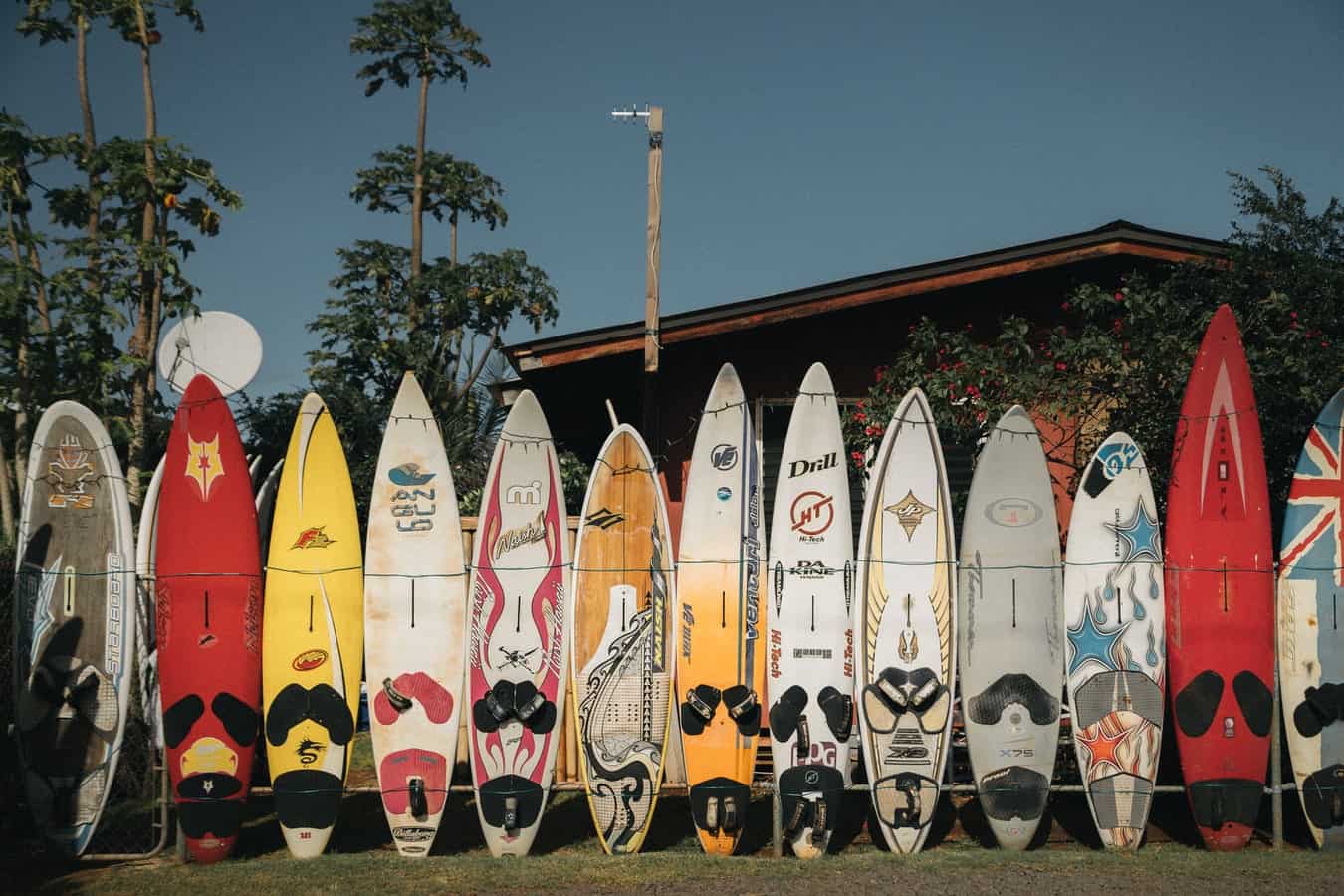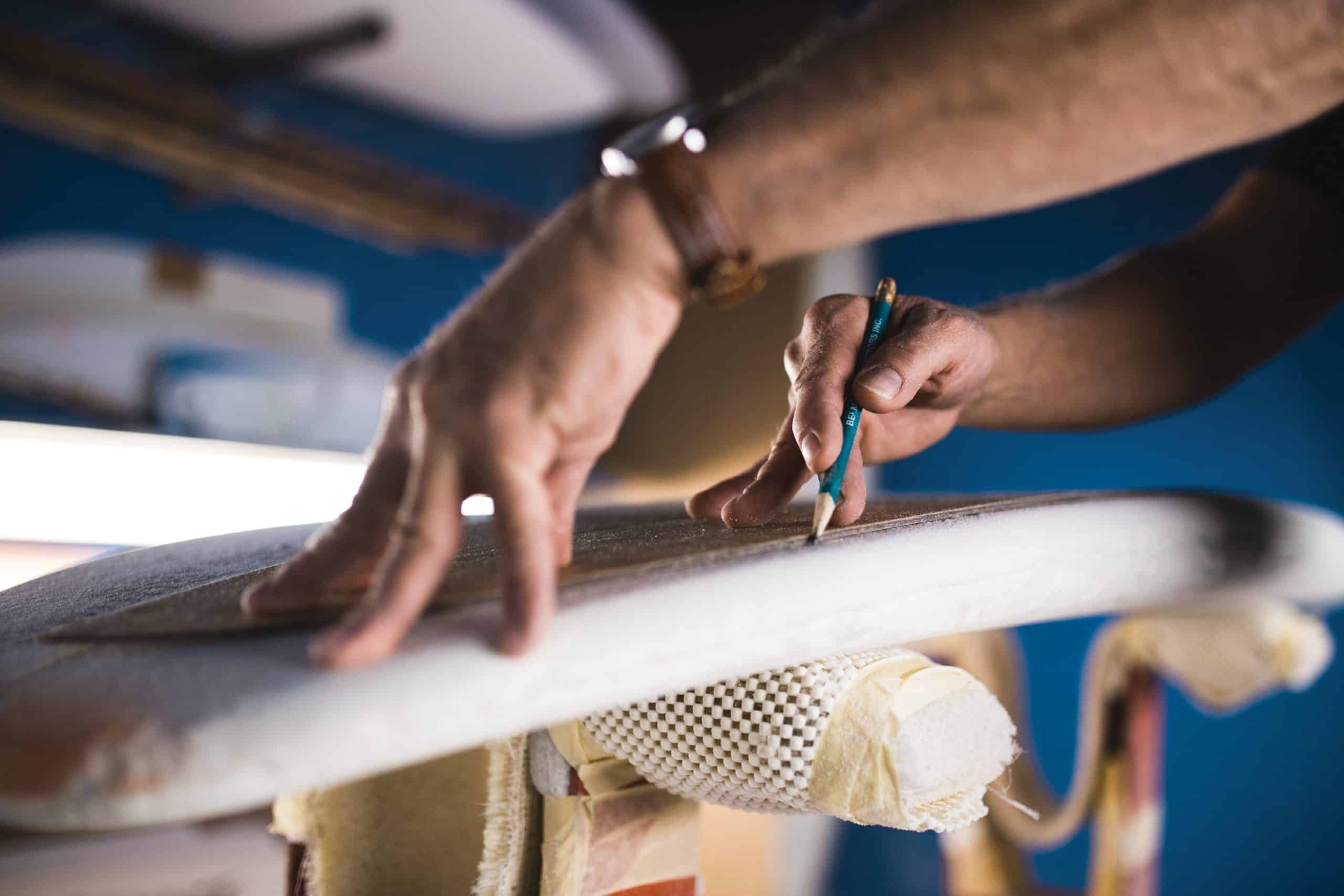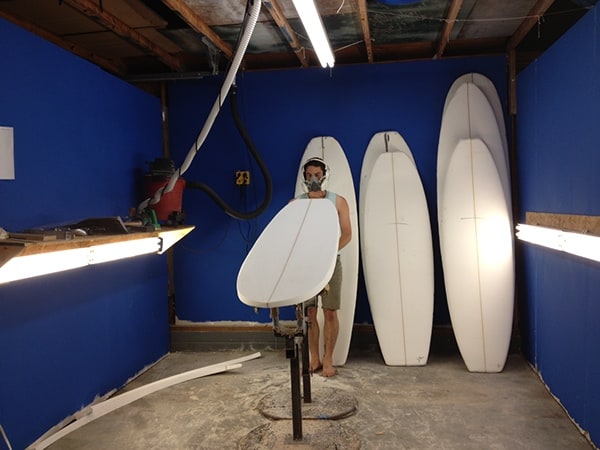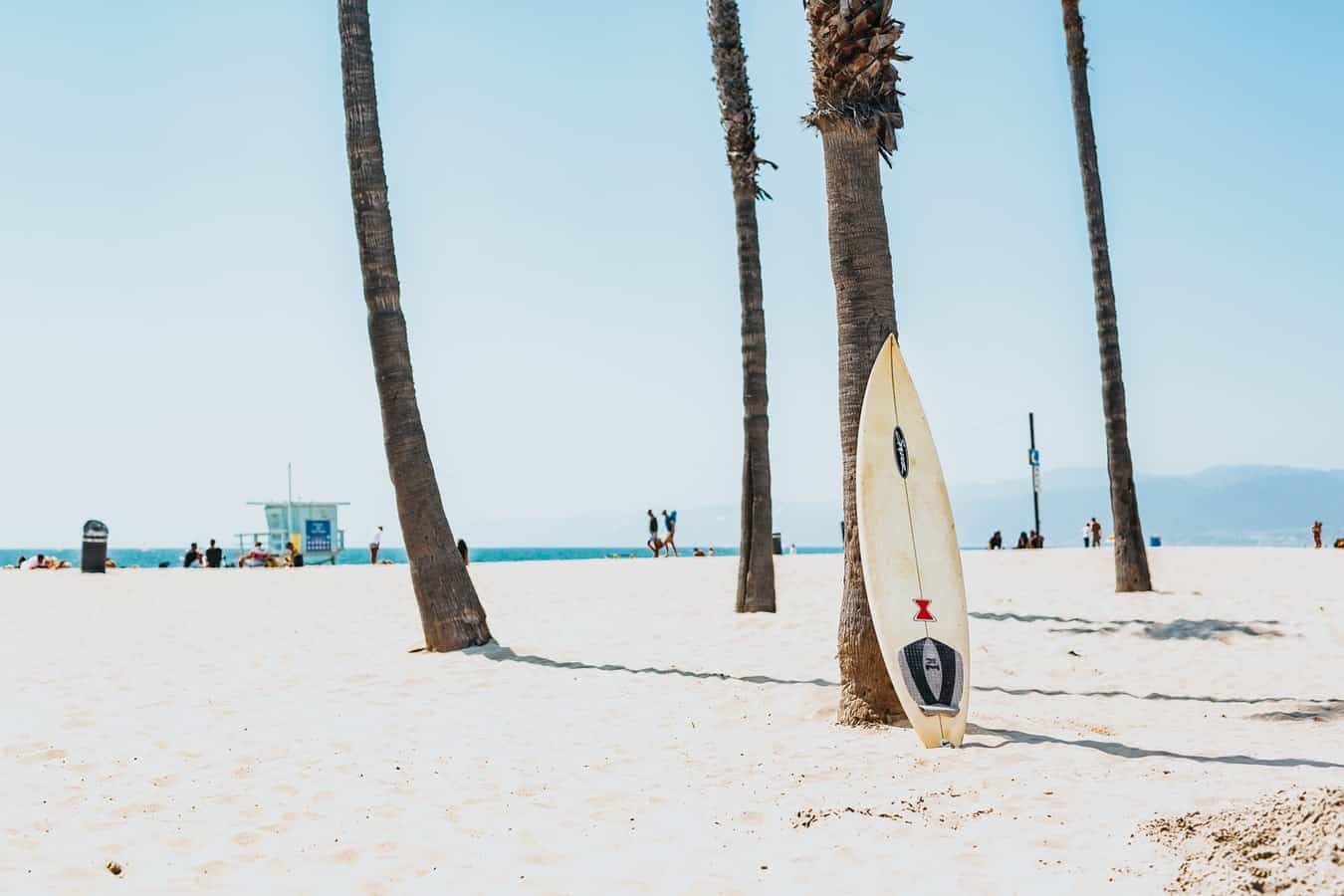Surfboards have been in existence for millennia. It is believed the first surfboard dates back to 250 A.D. in Polynesia. Hawaiians made the first modern surfboard out of wood, back in the 1600s. These boards were huge, heavy, and bulky. It took a strong man to lift the board and carry it to the ocean to surf. Today, surfboards are high tech – polyurethane or epoxy based, surfboards are made to be buoyant and durable and provide years of enjoyment. Many surfboards today are still handmade, while others are mass produced in giant factories throughout Asia, and this difference will affect the price of a surfboard.
Why are surfboards so expensive? Surfboards cost what they do because of the materials used, the cost of labor, and the type of surfboard you buy. For example, longboards will usually cost more than shortboards, and foam boards have their range of prices. Also, man made surfboards will cost more than those that are produced in a factory assembly line.
Surfboards made from well-known brands will often cost more but will not be as well made as some less expensive identical boards.
What Materials Go Into Making A Surfboard?
Before 2005, most quality surfboards were made with polyurethane foam. These “poly boards” are easier to ride and maneuver through the water. They’re great for paddling, standing, and riding waves.
After 2005, Clark Foam Company in southern California closed its doors forever. Clark Foam was the world’s number 1 world supplier of the polyurethane foam needed to make surfboards.
Surfing manufacturers began a worldwide search for other suppliers. In the meantime, other markets, particularly Asia, began manufacturing polyurethane foam surfboards to fill the gap left by Clark foam. These boards made on an assembly line are referred to disparagingly as “pop up boards” because of the way they are produced.
Boards made overseas are imported in the United States and are generally less expensive than boards made in America. There are a lot of smaller companies in the United States that still produce surfboards off the assembly line. These are “man made” boards and are more expensive than imported factory boards.
The 2 surfboards on the market today are either made from polyurethane foam or epoxy. Epoxy boards are a little stiffer than poly boards and respond more dramatically to waves and whitewater. While on an epoxy board you will feel the water moving the board around, a polyurethane board glides through the waves with much less bounce.
Poly boards also have more volume than epoxy boards, so they are more buoyant. This means they are easier to stand on and paddle with. It’s easier to keep your balance on a poly board compared to an epoxy board.
Shortboards made with polyurethane foam can run from $400.00 to $800.00, while longboards can cost as much as $1500.00.

Are All Surfboards Now Made Overseas?
The answer is, thankfully, no. This is not a slight on overseas manufacturers of surfboards. You can find well-made boards overseas that cost less than American made surfboards.
Surfboards are made by “shapers.” Shapers are people who design and build surfboards from scratch. A surfboard shaper uses “blanks”, which are made from polyurethane foam and are pre-formed into the shape of a surfboard.
To this day, surfboard shapers play an important role in surfing and are sought after by professionals and more experienced surfers. They design and create surfboards to order around the world. They are skilled in the craft of making surfboards to order. They manufacture only a handful of surfboards every week.
It’s estimated that the cost of the shaper to make a longboard is $500.00. Surfers will pay more for a hand-crafted board made by a shaper because the boards are designed to the surfer’s specifications.
Surfers may ask that their board have better maneuverability and go faster in the water. They want the paddling to be easier. Interestingly, surfboards made by hand by a shaper do not cost an arm and a leg. They may only be a couple of hundred dollars more expensive than a brand name surfboard.
Is It Worth Purchasing A Custom Built Surfboard?
The answer to whether you should invest more in a custom built surfboard depends on what you think about surfing, how often you surf, what your strengths and weaknesses are, and how personalized you want your surfboard to be.
Today, it is easy to buy a surfboard anywhere. A lot of people go online and order surfboards, not knowing where they were made and how the board looks and feels. Overseas mass production of surfboards, made by machine, are pushing out shapers from local surfboard shops.

It can take a shaper eight hours to make a single surfboard, which is why they produce so little. Compared to a factory that can make a surfboard in a matter of minutes, shapers are very slow.
Traditionally surfboards have been made by hand, but there was a dramatic change in manufacturing after 2005. As of 2010, only 60% of the surfboards used in the United States were made there. It is estimated that under 50% are made here today.
There has been a rising demand for surfboards thanks to surfing’s exploding popularity. At the same time, new surf enthusiasts are seeking inexpensive surfboards, which overseas manufacturers provide.
There are differences in the quality of mass-produced surfboards. Some are almost at par with handmade surfboards, while others are merely throw away boards that are used once in a while and then forgotten about.
In mass production, the emphasis is on keeping the costs low. Large factories, some hundreds of thousands of feet in size, hire thousands of employees, which is another cost factored into the production of the boards.
The company needs to cut costs when making huge quantities of surfboards. These cuts are made in employee wages and the materials that go into the making of a surfboard. The company also needs to keep the price of the surfboard low because they are competing with other large overseas surfboard manufacturers.

The wages of overseas workers are barely 1% of wages an American worker making surfboards would make. Low employee wages overseas are attractive to American companies since low labor costs mean more profit. It comes as no surprise that most American surfboard companies have parts of their surfboards made overseas for this reason.
It’s also important to consider whether these overseas employees working on a tight production schedule are familiar with the sport. One needs to ask if they have ever surfed, or even if they are surf enthusiasts.
This does not mean that all surfboards made overseas are of lower quality. Many are great quality and you can buy a high end surfboard for less that will enhance your surfing experience.
Conversely, a shaper makes surfboards out of a love for surfing. Shapers don’t become rich from their work. For him or her, it is a sublime sport. A shaper knows the difficulties and challenges surfers face in different kinds of ocean environments.
For example, if you tell a shaper that you surf mainly in San Diego, a California-born shaper will likely understand what challenges a surfer faces in that part of the Pacific Ocean. Or you can tell him you want to ride big waves off the Hawaiian islands, and he can craft a surfboard with more volume and buoyancy to help you stay afloat on your custom made board.
We live today in a global economy. So many commodities are made overseas, such as televisions, phones, furniture, and almost anything you can think of. In this milieu, hand crafted products are highly desired. But expect whatever you buy that’s made by hand to be more expensive.
Related Questions
What Are The Most Respected Surfboard Companies On The Market?
The surfboard companies listed here make surfboards for eco-friendly materials and have been manufacturing surfboards for over 40 years.
Channel Island is a highly respected company that’s been in business since 1969. Channel Island boards are used by pros as well as nonprofessional surfboard enthusiasts. They range in price from $250.00 to $900.00 for a longboard.
Firewire surfboards are the most environmentally friendly out of the top rated surfboards. Their top models are made from wood, as they were made by Hawaiian Islanders centuries ago. But modern technology is built into these lighter wood boards. They can range in price from about $900.00 to under $1400.00
The Rusty Surfboards company works with top shapers around the country and builds surfboards according to customer requirements. You can order custom built boards that match your height, weight, and level of experience if you wish. They are built locally in Southern California and their prices range from under $700.00 to $1200.00
Which is Better, Polyurethane, Or Epoxy Surfboards?
There are enthusiasts on both sides, so it comes down to personal preference. Polyurethane is recommended for beginner surfers and for pros who do big wave surfing. Poly boards are easier to maneuver, and the first surfboards made in modern times used polyurethane foam.
Keep in mind that epoxy boards are great for speed and they are lighter than poly boards. Also, epoxy boards are more durable and don’t discolor over time as poly boards do. Less waxing is needed as well. Lastly, epoxy boards can cost up to $200.00 less than a poly board that is the same size.
Will Shapers Go Out Of Business In The New Economy?
In a lot of tech industries, craftsmen and women have been replaced by robots or computers. Surfing is an entirely different thing. It is a spiritual experience and one that requires the talented hands of shapers. There will always be shapers for those surfers who want their boards to be unique and individual, as they are.

